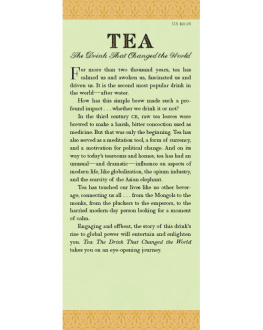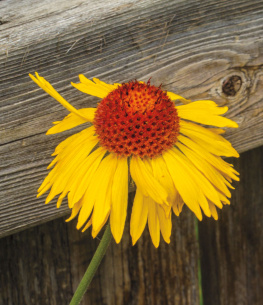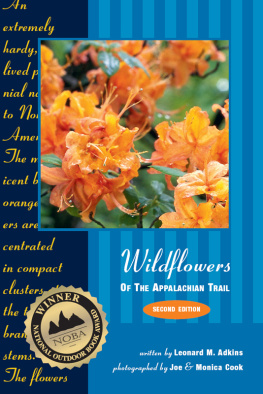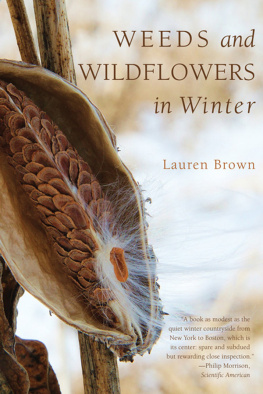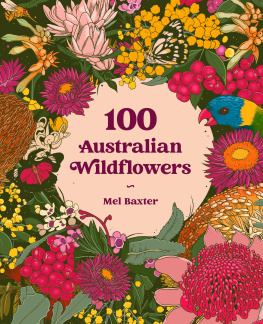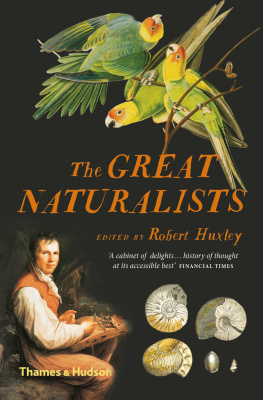Laura C. Martin - A Naturalists Book of Wildflowers
Here you can read online Laura C. Martin - A Naturalists Book of Wildflowers full text of the book (entire story) in english for free. Download pdf and epub, get meaning, cover and reviews about this ebook. year: 2021, publisher: Countryman Press, genre: Romance novel. Description of the work, (preface) as well as reviews are available. Best literature library LitArk.com created for fans of good reading and offers a wide selection of genres:
Romance novel
Science fiction
Adventure
Detective
Science
History
Home and family
Prose
Art
Politics
Computer
Non-fiction
Religion
Business
Children
Humor
Choose a favorite category and find really read worthwhile books. Enjoy immersion in the world of imagination, feel the emotions of the characters or learn something new for yourself, make an fascinating discovery.

- Book:A Naturalists Book of Wildflowers
- Author:
- Publisher:Countryman Press
- Genre:
- Year:2021
- Rating:3 / 5
- Favourites:Add to favourites
- Your mark:
- 60
- 1
- 2
- 3
- 4
- 5
A Naturalists Book of Wildflowers: summary, description and annotation
We offer to read an annotation, description, summary or preface (depends on what the author of the book "A Naturalists Book of Wildflowers" wrote himself). If you haven't found the necessary information about the book — write in the comments, we will try to find it.
A Naturalists Book of Wildflowers — read online for free the complete book (whole text) full work
Below is the text of the book, divided by pages. System saving the place of the last page read, allows you to conveniently read the book "A Naturalists Book of Wildflowers" online for free, without having to search again every time where you left off. Put a bookmark, and you can go to the page where you finished reading at any time.
Font size:
Interval:
Bookmark:
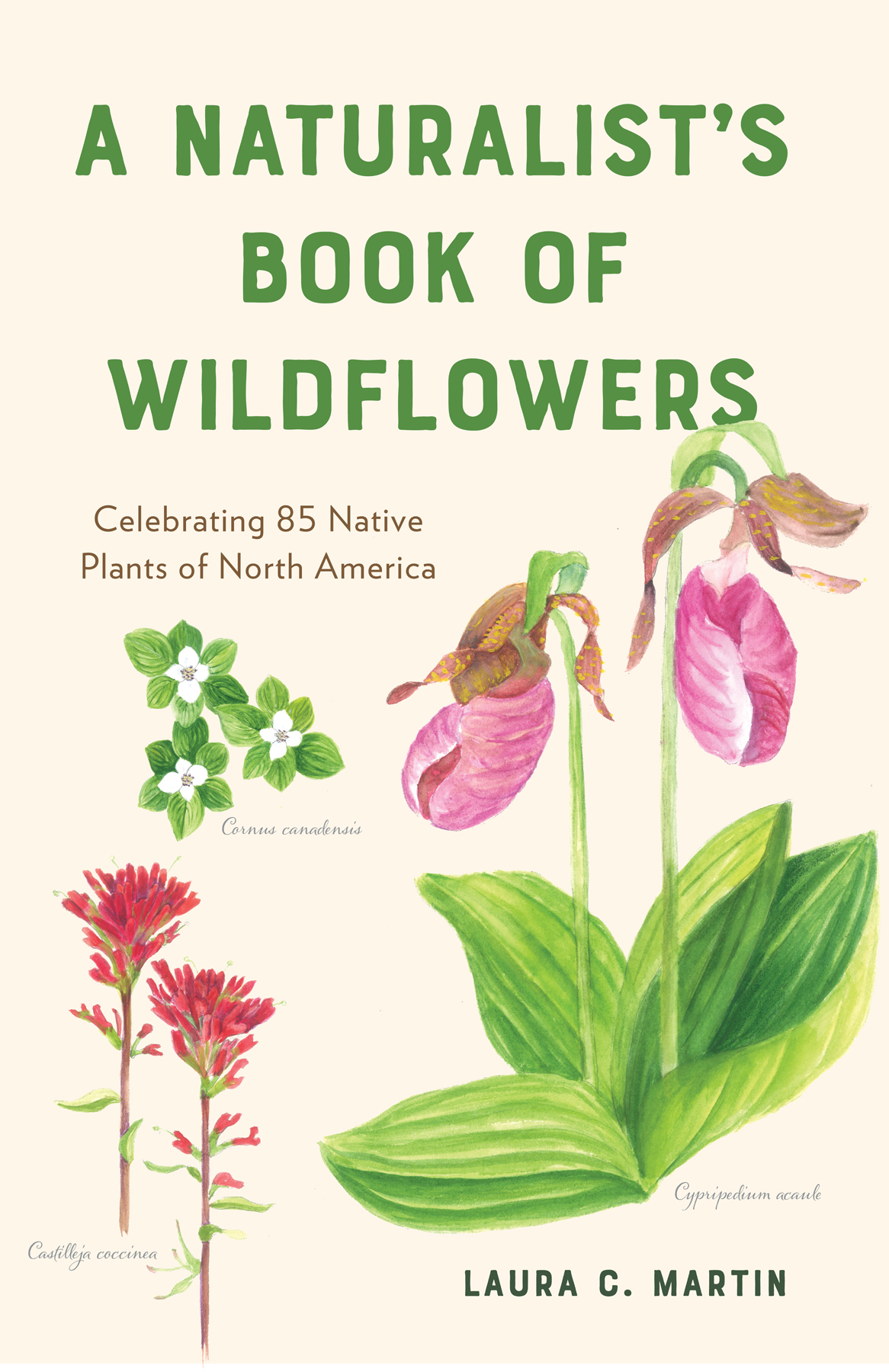

A NATURALISTS
BOOK OF
WILDFLOWERS
Celebrating 85 Native
Plants of North America
LAURA C. MARTIN


FOR MY GRANDCHILDREN:
RIVERS, ELLIE, ROWAN,
BRAXTON, DAVEY, AND GEORGE







I have spent my entire life loving wildflowers. I grew up in the woods on the outskirts of the city, and because my mother was a wildflower enthusiast, I became one too. I eventually acquired a bachelors degree in botany and then a certification in botanical illustration. The result is A Naturalists Book of Wildflowers: Celebrating 85 Native Plants of North America. This celebration comes through scientific text, interesting folklore, detailed botanical drawings, and whimsical sketches. As both a trained botanist and a botanical illustrator, I have learned to look at plants from many different angles, and I am happy to share this perspective with you. I hope that this book provides you with a fun, fascinating, and enjoyable way to examine and celebrate our native plant treasures.
In the plant entries, I have included annotated drawings, time of bloom, natural range, conservation status, wildlife partners, medicinal uses, gardening tips, and lots of fun folklore, superstitions, and trivia.
The wildflowers are, in my humble opinion, the most beautiful part of an ecosystem. They are no more important than any other element, but I think they are the most beautiful, making their study even more pleasurable. But in choosing which plants to include in this book, I wanted to look beyond physical beauty and consider, also, the fascinating cultural and natural histories of each plant. For example, Indian hemp is easily overlooked in the field. With small, plain white flowers, it simply cant compare to the beauty of a glacier lily or a columbine. But a little research uncovered the fact that Indian hemp was an incredibly useful plant for many American Indian tribes, as they used the inner pith for making string and cord.
Many native plants provided essential resources for American Indians. Plants were used for food, medicine, and ceremony. They were used for weaving, cordage, dyes and inks, and much more. Sometimes the existence of a tribe depended on the wildflowers growing around them. For example, bitterroot was such an important food source for the Kootenai and Flathead that it was used as currency. You could buy a horse for a 50-pound bag of bitterroot.
The indigenous peoples of North America found medicines in the woods and fields, plains and deserts in which they lived. Yarrow was used to staunch blood flowing from a wound, trillium was used during childbirth, and bloodroot was used (sparingly, due to its toxic nature!) to treat colds and congestion. When settlers from the eastern United States began to move west, they too became dependent on the native plants.
I included other plants because of their essential role in nature. For example, milkweed is an irreplaceable food source for the larvae of monarch butterflies. Without milkweed, wed have no monarchs. Native plants provide not only food and nectar for wildlife but also nesting sites and protection for myriad species, making them a necessary part of their natural community. It is not a one-sided relationship. Flowers are dependent on pollinators and, in some cases, such as the ladys slipper, on the fungus in the soil, which provides critical nutrients to the plant. In the individual plant entries, I have included information about these relationships under the heading Wildlife Partners.
Some plants were included simply because they are amazing. Take, for example, the small bunchberry, which earned the nickname firecracker because it releases pollen at the startling rate of 24,000 meters per second. Our native plants truly are full of magic.
The United States is composed of many complex and overlapping ecosystems, and I have included plants that are indigenous to a wide variety of naturally occurring plant communities.
Most people, especially gardeners, are accustomed to thinking about plant distribution as it appears in USDA horticultural growing zones, which are based on average minimum temperatures of a region. These make up horizontal bands dividing the country from north to south. Ecologically, North America has been divided by the Commission for Environmental Cooperation into broad plant community zones that are based on dominant vegetation as well as soil type, moisture, wildlife, geology, and other plant forms. These are grouped more vertically than horizontally.
For example, the Eastern Temperate Forests make up a large and diverse ecosystem, and it should be no surprise that many of our native wildflowers are found in this system. The West is a little more complex in that it features plant communities that are found in areas as diverse as deserts to high alpine meadows. The natural ranges and regions listed in this book are broad indications only and provide just a general idea of where these plants are found.

1. Marine West Coast Forest 2. Northwest Forested Mountains 3. Mediterranean California 4. Temperate Sierras 5. North American Deserts 6. Great Plains 7. Northern Forests 8. Eastern Temperate Forests 9. Tropical Wet Forests
As an artist, it was impossible for me not to substitute drawings for words, particularly while out in the field. It was much easier for me to remember the plants with arrows and sketches and margin notes than to simply write about them. So Ive included these drawings with the hope that through them, the personalities of these plants will come alive for you.
As lovely as it is to look and wonder (and maybe draw!) these plants, its also tons of fun to use the more abundant ones for a variety of purposes. Ive included chapters on gardening, foraging and cooking, wildflower crafts, and doing activities with kids. Ive also included a little botany to help with identification and a lot of whimsy, folklore, superstition, and stories just because its fun.
Font size:
Interval:
Bookmark:
Similar books «A Naturalists Book of Wildflowers»
Look at similar books to A Naturalists Book of Wildflowers. We have selected literature similar in name and meaning in the hope of providing readers with more options to find new, interesting, not yet read works.
Discussion, reviews of the book A Naturalists Book of Wildflowers and just readers' own opinions. Leave your comments, write what you think about the work, its meaning or the main characters. Specify what exactly you liked and what you didn't like, and why you think so.


